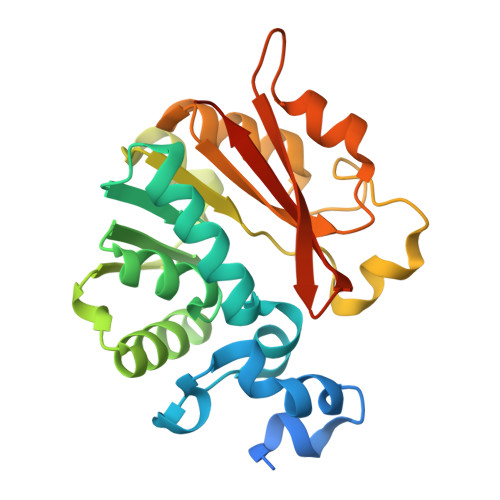Structural basis for m7G-cap hypermethylation of small nuclear, small nucleolar and telomerase RNA by the dimethyltransferase TGS1.
Monecke, T., Dickmanns, A., Ficner, R.(2009) Nucleic Acids Res 37: 3865-3877
- PubMed: 19386620
- DOI: https://doi.org/10.1093/nar/gkp249
- Primary Citation of Related Structures:
3GDH - PubMed Abstract:
The 5'-cap of spliceosomal small nuclear RNAs, some small nucleolar RNAs and of telomerase RNA was found to be hypermethylated in vivo. The Trimethylguanosine Synthase 1 (TGS1) mediates this conversion of the 7-methylguanosine-cap to the 2,2,7-trimethylguanosine (m(3)G)-cap during maturation of the RNPs. For mammalian UsnRNAs the generated m(2,2,7)G-cap is one part of a bipartite import signal mediating the transport of the UsnRNP-core complex into the nucleus. In order to understand the structural organization of human TGS1 as well as substrate binding and recognition we solved the crystal structure of the active TGS1 methyltransferase domain containing both, the minimal substrate m(7)GTP and the reaction product S-adenosyl-L-homocysteine (AdoHcy). The methyltransferase of human TGS1 harbors the canonical class 1 methyltransferase fold as well as an unique N-terminal, alpha-helical domain of 40 amino acids, which is essential for m(7)G-cap binding and catalysis. The crystal structure of the substrate bound methyltransferase domain as well as mutagenesis studies provide insight into the catalytic mechanism of TGS1.
- Abteilung für Molekulare Strukturbiologie, Institut für Mikrobiologie und Genetik, Georg-August-Universität Göttingen, 37077 Göttingen, Germany.
Organizational Affiliation:




















